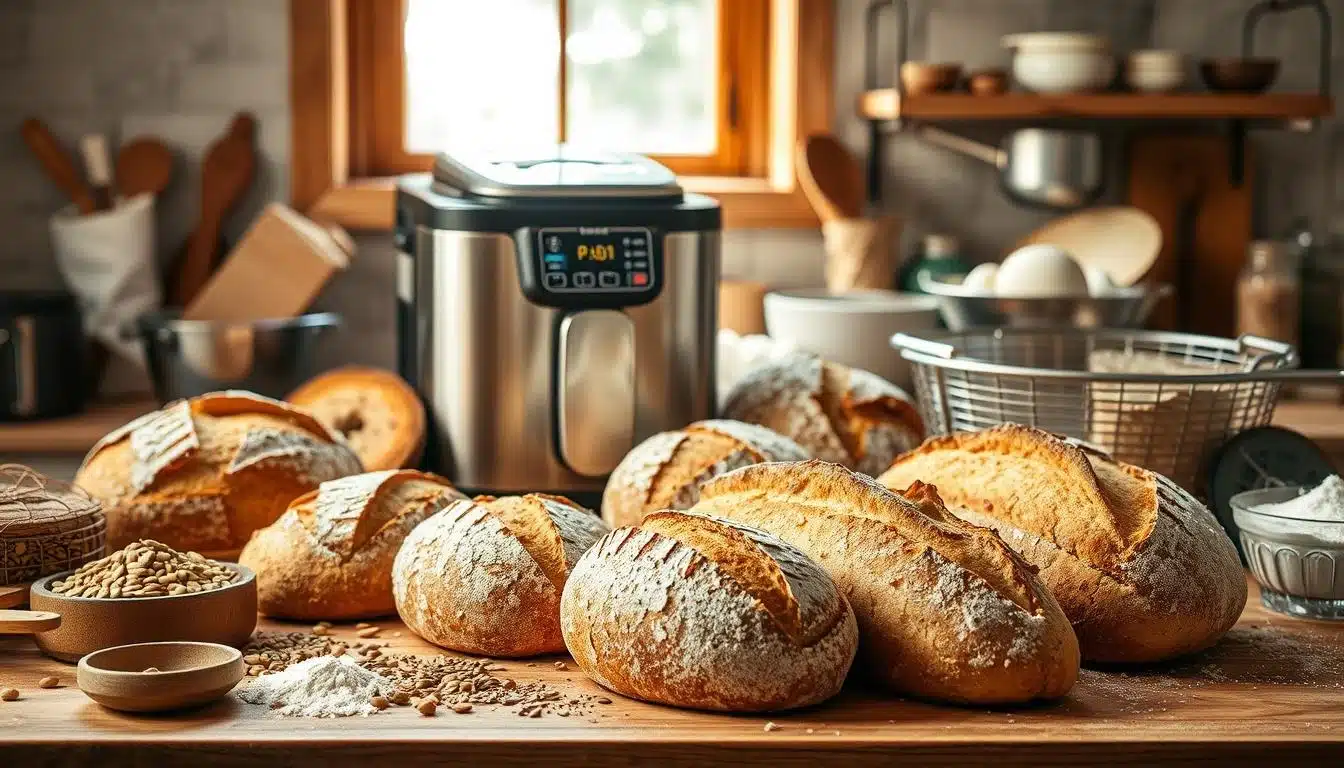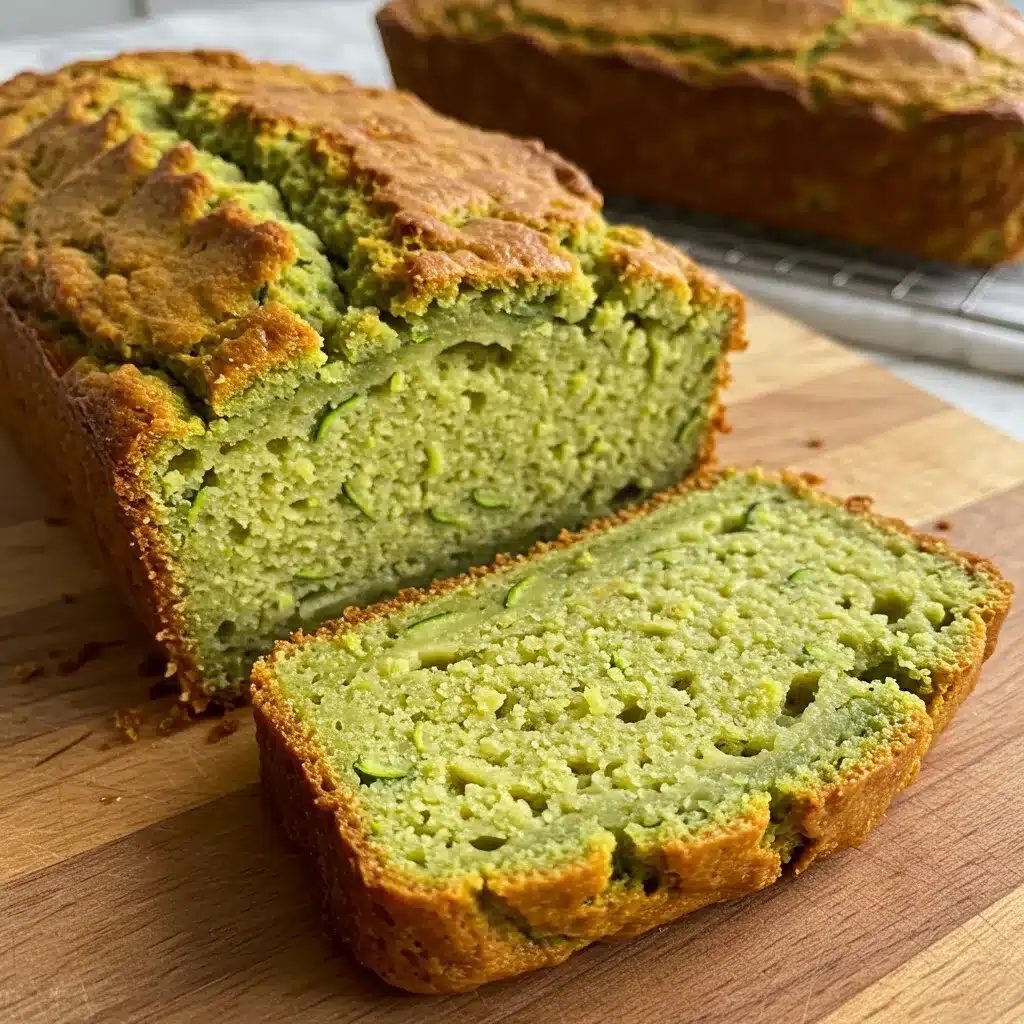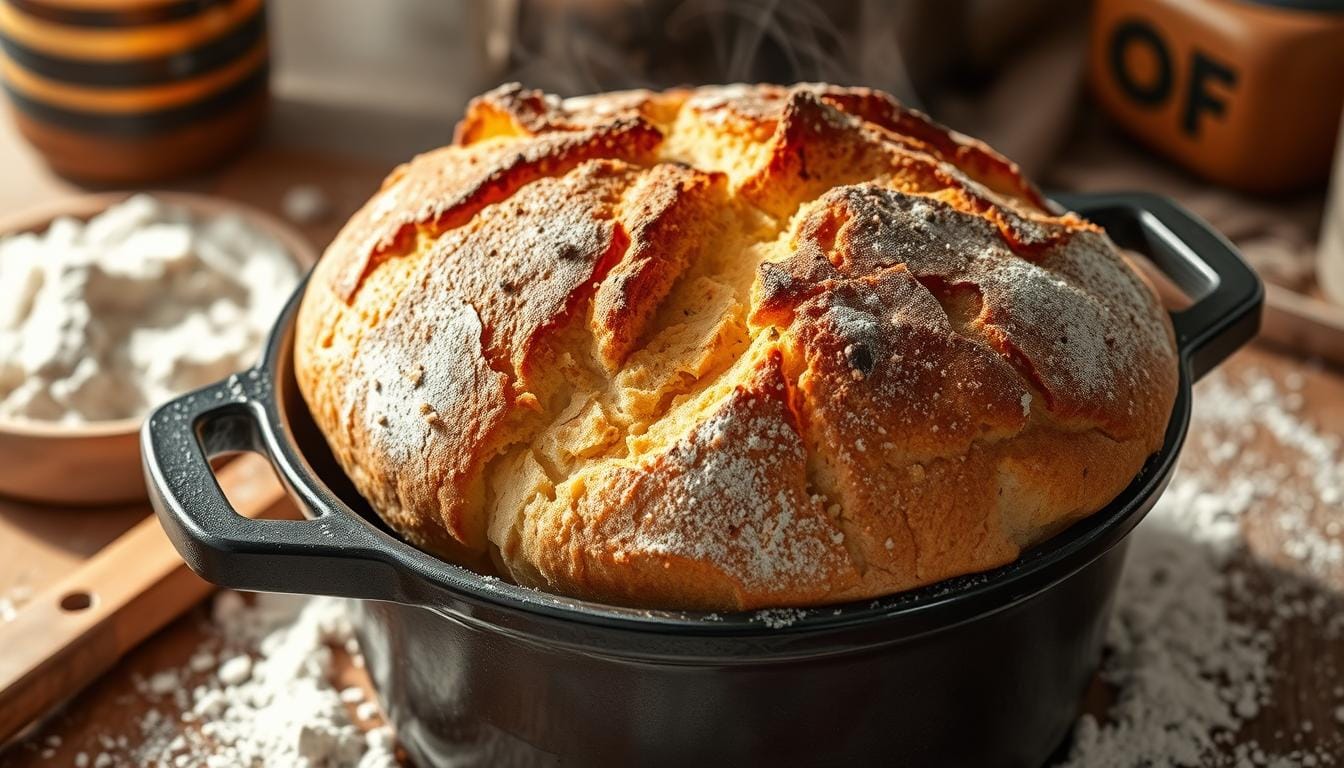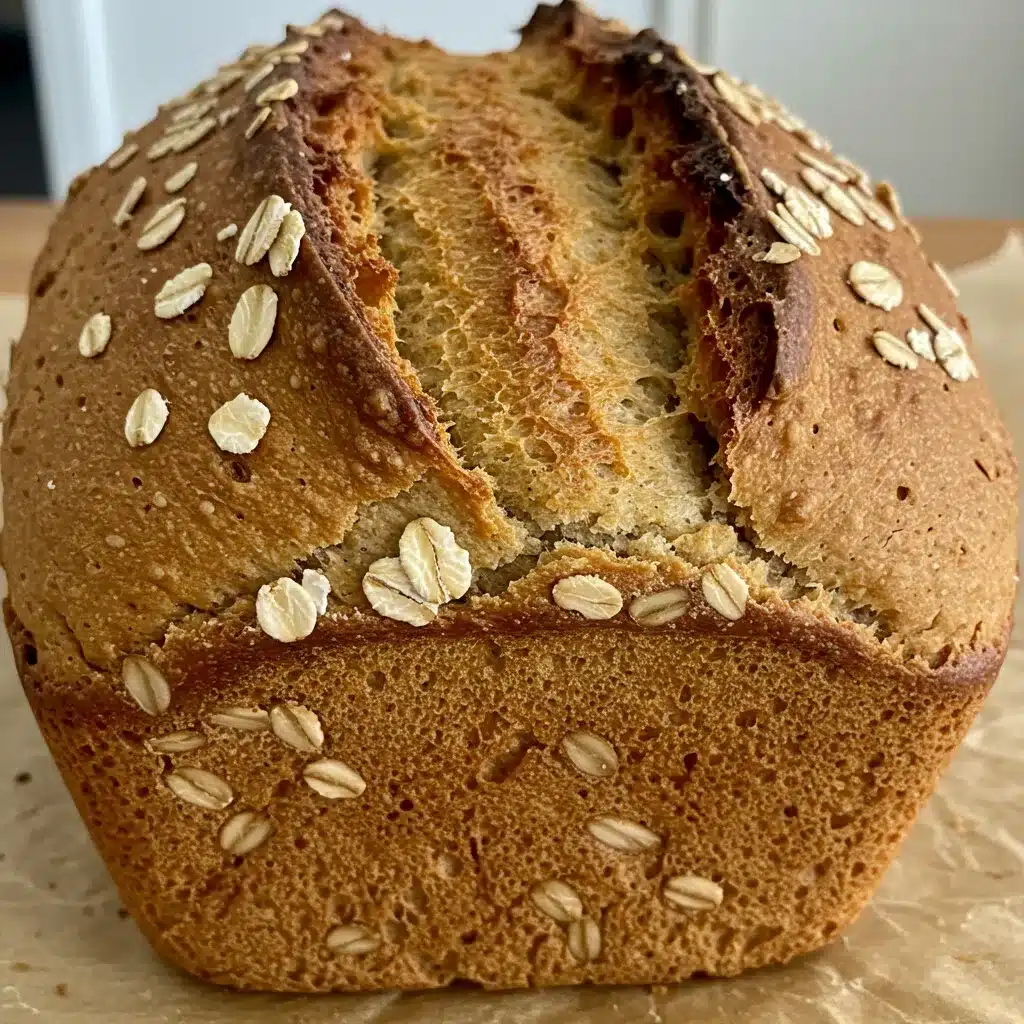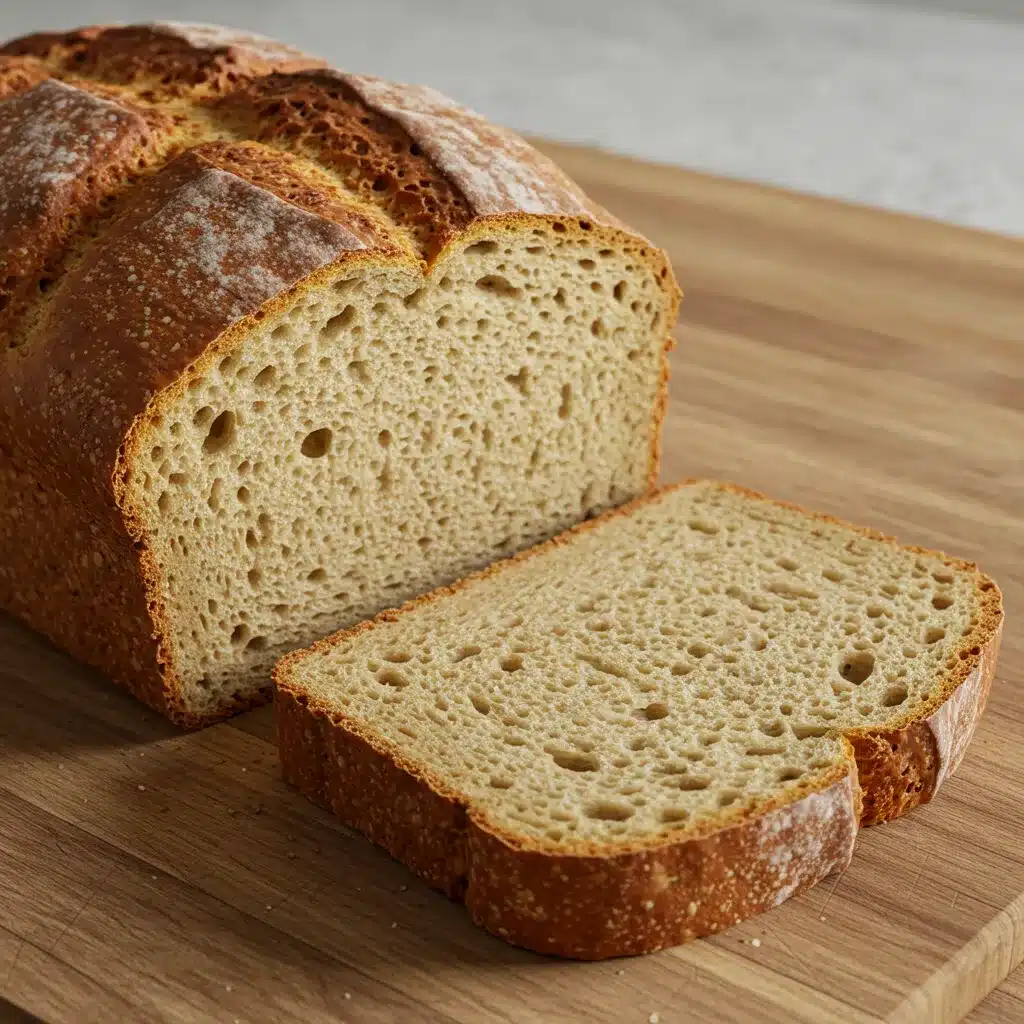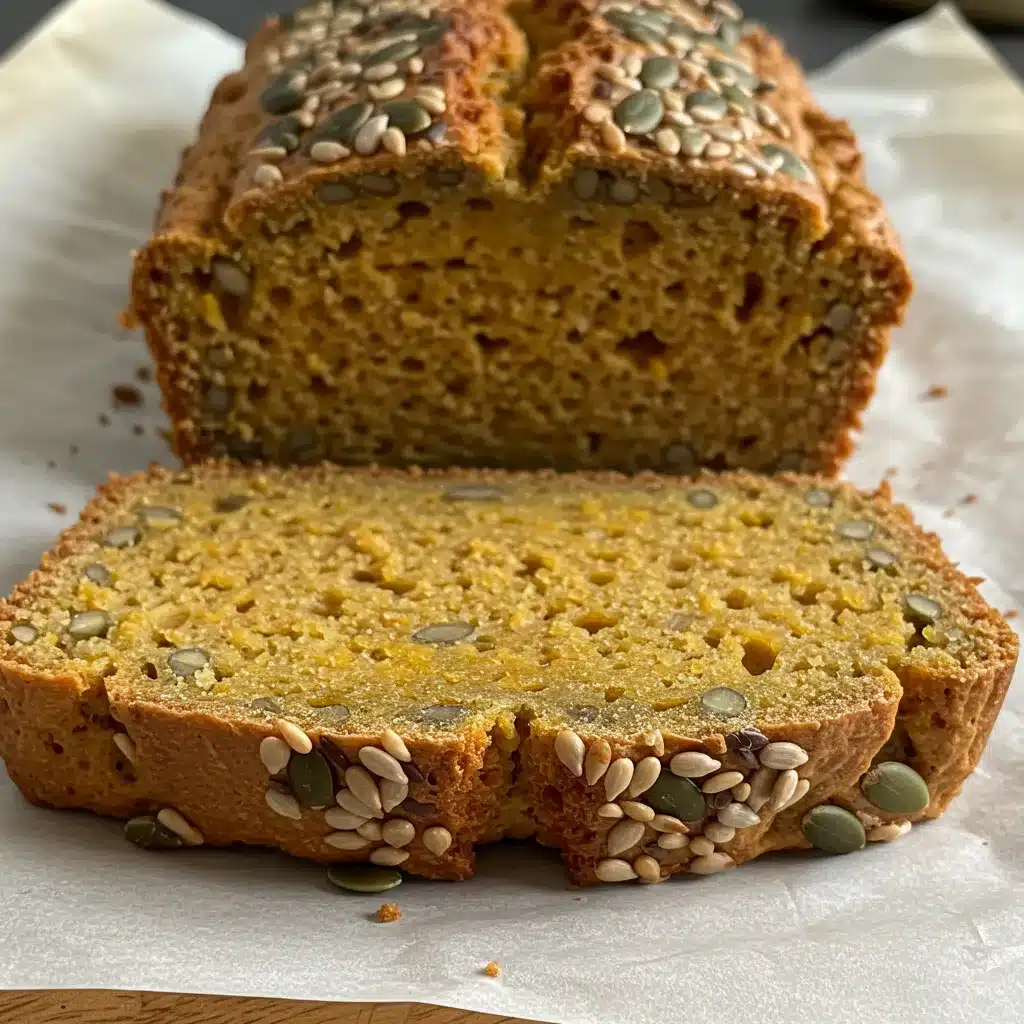Delicious Vegan Bread Recipe – Easy to Make at Home
Enjoy the soft, wholesome flavor of fresh vegan bread with this easy recipe. Perfect for sandwiches, toast, or snacks, it’s healthy, affordable, and planet-friendly. Whether you’re a pro or a beginner, this guide helps you bake the perfect loaf at home.
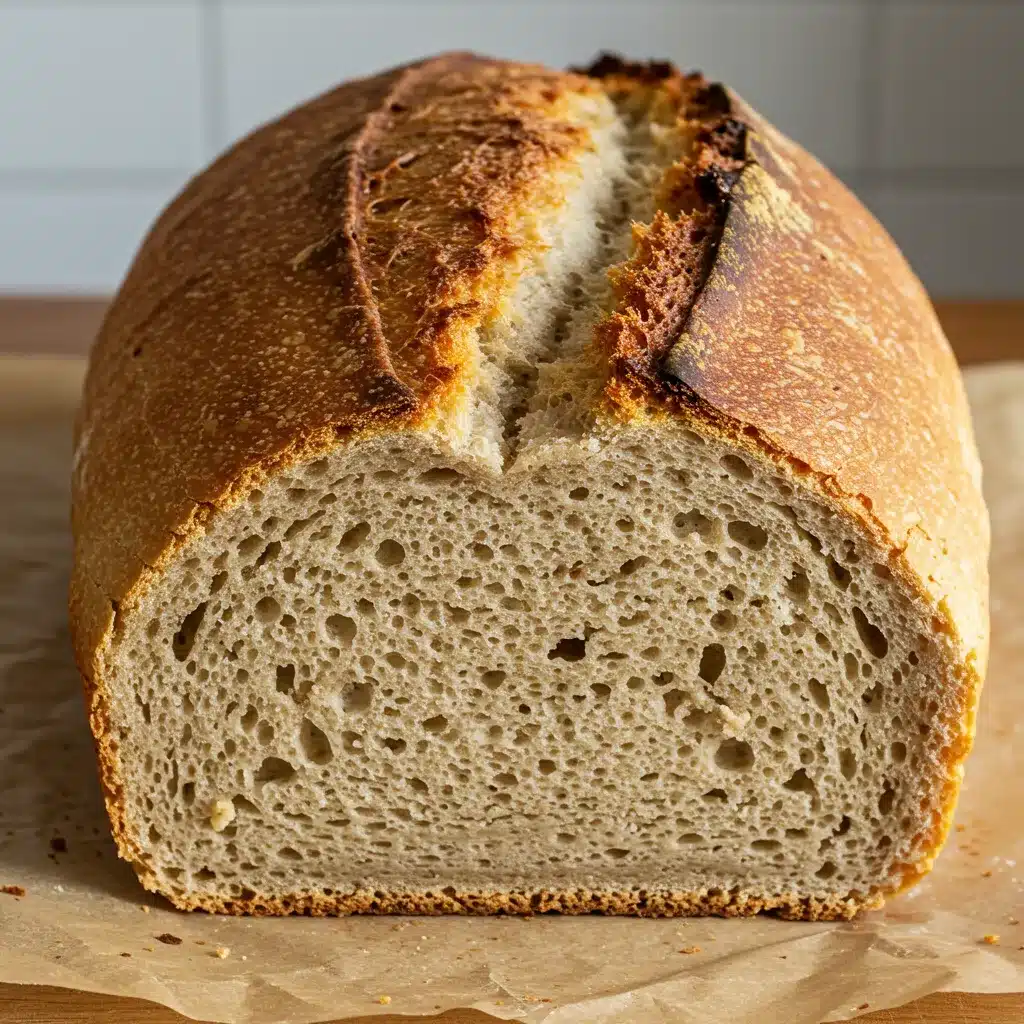
Table of Contents
What is Vegan Bread Recipe?
Vegan bread Recipe is a type of bread made without any animal-derived ingredients, such as milk, eggs, butter, or honey, making it suitable for those following a plant-based diet.This versatile bread is commonly used for sandwiches, toast, or as a side to soups and salads.
This vegan bread recipe is:
- Quick and easy to make
- Made completely from scratch
- Free of eggs and oil
- Ideal for sandwiches or toast
- Features a crackling crust
- Boasts a soft center with big airy holes
- 100% dairy-free
- Simply unbeatable in taste and texture!
Essential Ingredients
- All-purpose or bread flour
- Water
- Yeast (active dry or instant)
- Salt
- Optional: Sugar or maple syrup

Must-Have Equipment for Making Perfect Bread
- A mixing bowl is essential for combining the ingredients and kneading the dough.
- Wooden Spoon or Dough Whisk – To mix the ingredients thoroughly.
- Bench Scraper – Handy for shaping and handling dough.
- Proofing Basket or Bowl – Helps the dough maintain its shape while rising.
- Kitchen Scale – For precise measurements.
- Dutch Oven or Baking Sheet – Ideal for achieving a crackling crust.
- Parchment Paper – Prevents sticking during baking.
- Clean Kitchen Towel – To cover the dough while proofing.
Step-by-Step Vegan Bread Recipe Guide
Combine warm water and sugar, sprinkle yeast, and let it foam (5–10 mins).
Add flour and salt to yeast mix, stir until a shaggy dough forms.
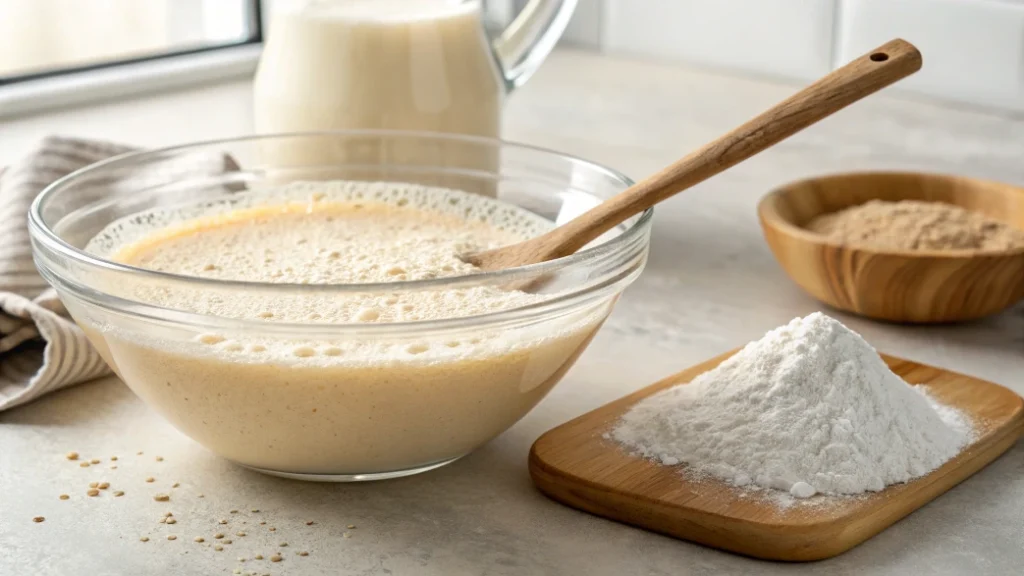
Knead on a floured surface for 8–10 mins or use a stand mixer for 5–7 mins.
Let dough rise in a greased bowl, covered, for 1–2 hours until doubled.
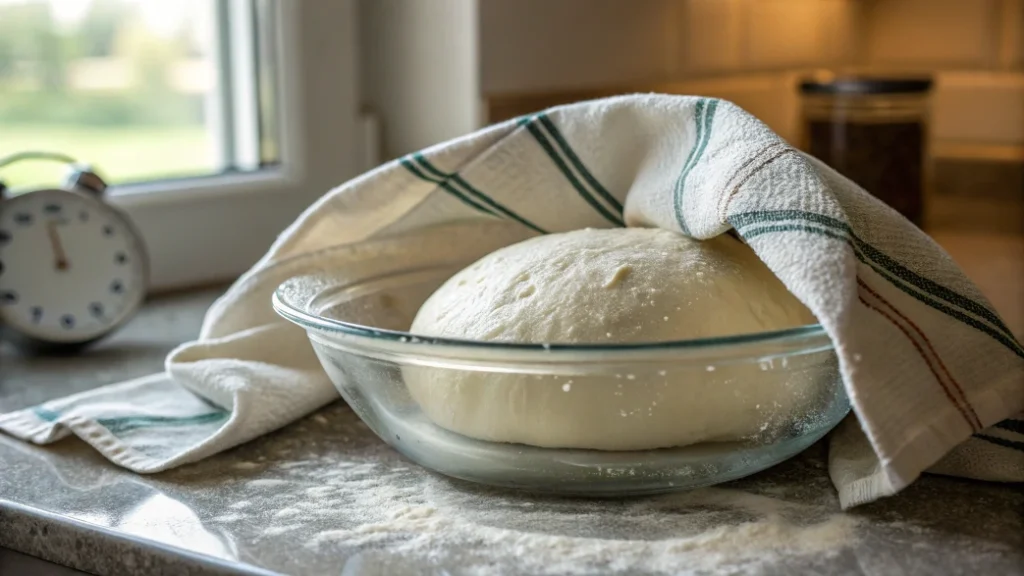
Punch down, shape the dough, and place in a proofing basket.
Cover and let rise 30–60 mins until puffy.
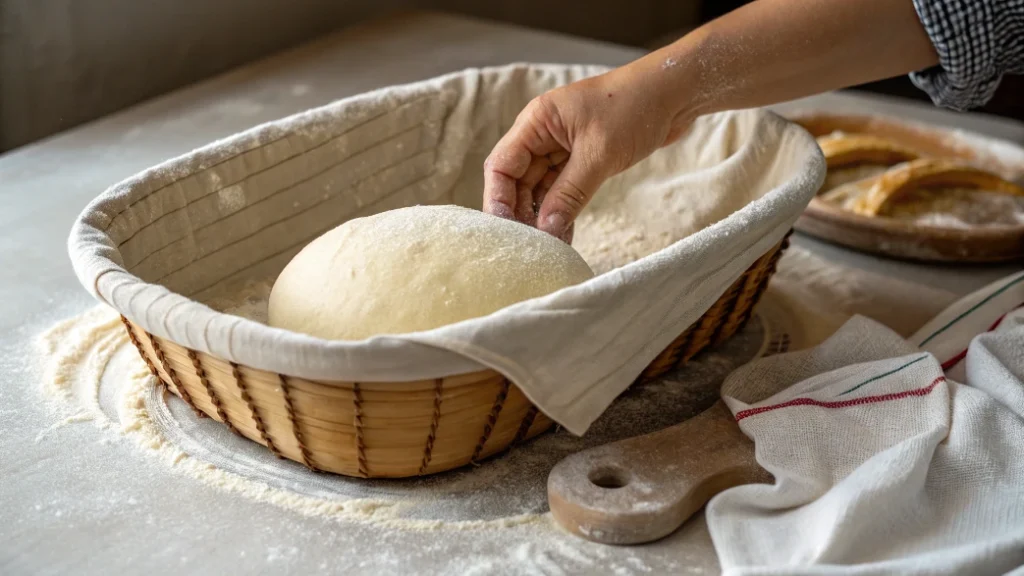
Heat oven to 450°F with a Dutch oven inside for 30 mins.
Transfer dough into the Dutch oven, cover for 20 mins, uncover, and bake 20–25 mins more.
Let cool on a rack for 30 mins before slicing.
Tips for Perfect Vegan Bread
For the best vegan bread, use fresh, high-quality ingredients and measure accurately, especially the flour and water. Ensure your yeast is active by proofing it in warm (not hot) water. Knead the dough thoroughly for proper gluten development, and allow adequate rising time in a warm, draft-free area. Baking in a preheated Dutch oven or with steam ensures a crusty exterior and soft, airy interior. Always let the bread cool completely before slicing for the best texture.
How to Store Vegan Bread
To keep your vegan bread fresh, store it in an airtight container or wrap it tightly in a clean kitchen towel or reusable wrap. Keep it at room temperature for up to 3 days. For longer storage, slice the bread and freeze it in a sealed bag, so you can easily thaw individual slices as needed. Avoid refrigerating bread, as it can dry it out and alter the texture.
Frequently Asked Questions
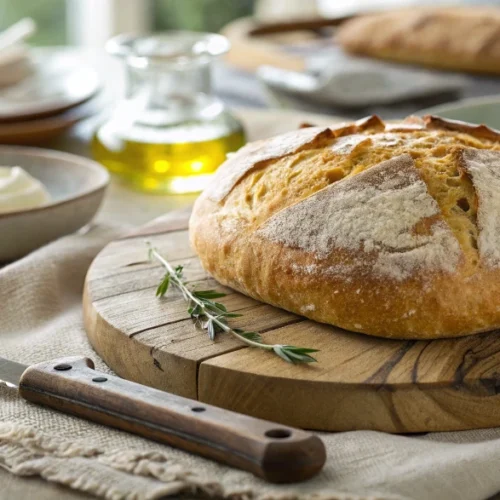
Delicious Vegan Bread Recipe – Easy to Make at Home
Ingredients
- All-purpose or bread flour
- Water
- Yeast active dry or instant
- Salt
- Optional: Sugar or maple syrup
Instructions
- Combine warm water and sugar, sprinkle yeast, and let it foam (5–10 mins).
- Add flour and salt to yeast mix, stir until a shaggy dough forms.
- Knead on a floured surface for 8–10 mins or use a stand mixer for 5–7 mins.
- Let dough rise in a greased bowl, covered, for 1–2 hours until doubled.
- Punch down, shape the dough, and place in a proofing basket.
- Cover and let rise 30–60 mins until puffy.
- Heat oven to 450°F with a Dutch oven inside for 30 mins.
- Transfer dough into the Dutch oven, cover for 20 mins, uncover, and bake 20–25 mins more.
- Let cool on a rack for 30 mins before slicing.
Notes
- For best results, use warm water to help the yeast activate.
- Let the dough rise in a warm place for an airy texture.
- Store leftovers in an airtight container for up to 3 days or freeze for later.
Nutrition
Delicious Recipes, Made Simple

